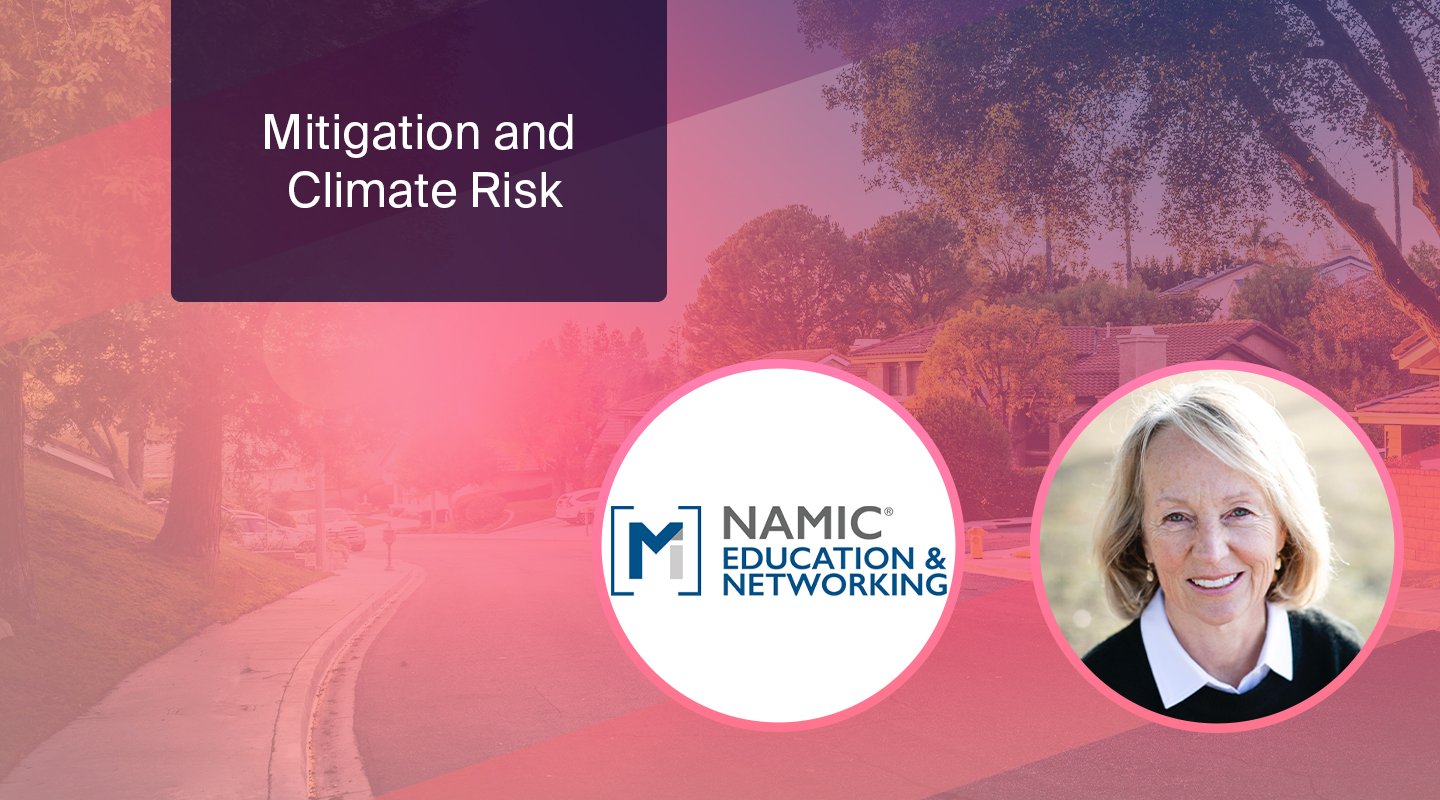ZestyAI & NAMIC: How P&C is Countering Rising Climate Losses


San Francisco, CA, June 27, 2023 – Cathy Link, Vice President of Customer Success at ZestyAI, was invited this month by the National Association of Mutual Insurance Companies (NAMIC) to address P&C insurance underwriters. In her presentation, she described how the insurance industry will adapt to climate risks through better approaches to risk assessment, homeowner mitigation, and consumer transparency.
Link, former Chief Underwriting Officer at Union Standard Insurance Company (a W.R. Berkley company), also touched on the current regulatory environment, where some states are now requiring discounts for wildfire mitigation efforts and limiting which strategies insurers can use to set rates. Leading mutuals are choosing AI-based tools to navigate this challenging regulatory market and effectively manage the effects of elevated climate risk on their portfolios.
Rise of Secondary Perils
The past decade has seen the rise of secondary perils like wildfires and floods. No longer just high-frequency/low-severity events, these emergent climate risks have begun to have a real economic impact. These so-called secondary perils have accounted for the lion’s share of global losses in eight of the last 10 years, the only exceptions being in 2017 and 2022. Secondary perils account for such a significant share of losses because of growing development of hazard-prone areas and an increase in the baseline risk level of catastrophic events.
The Menace of Wildfires
Wildfires, in particular, can no longer be ignored. With a quarter of U.S. residents living in a county impacted by wildfires in the last 25 years, as reported by the Insurance Institute for Business & Home Safety (IBHS), wildfire risk management has become key for maintaining profitability for insurers writing business in the Western US. The solution to this growing risk is likely to come from an increased connection between risk assessment and mitigation efforts, because temporarily restricting wildfire activity brings greater long-term risk through fuel accumulation.
How Can AI Improve Risk Assessment & Mitigation?
Many climate risk solutions do not have precise-enough estimates to differentiate individual properties. Beyond precision, these models also lack the nuance to explain how the score was affected by features within the control of a homeowner or community. Fewer still are able to update their assessment following mitigation actions, so there is little incentive for property owners to take actions to mitigate their risk. The unfortunate consequence of this is that many risk scores from older models do not have a material impact on the underlying risk, even if the benefits of that impact could be shared by both the insurer and the insured.
Z-FIRE™ is ZestyAI’s AI-powered wildfire risk model, and it incorporates data from more than 1,500 historic wildfire events to learn the patterns of damage and spread across the United States. Z-FIRE is able to measure the protective value of actions taken by property owners, including clearing out brush, creating defensible spaces around properties, and using fire-resistant building materials. By doing so, not only does the property become safer but the likelihood of securing more favorable insurance terms can increase.
Because Z-FIRE uses computer vision and aerial imagery to provide property-specific scores, it can adapt to reflect mitigation efforts undertaken by individual property owners. This enables a dialogue between the insurer and the insured to act upon risk, and can bring back coverage to areas previously thought too-risky by prior models. Furthermore, insurers using this tool can identify properties that carry less risk because of actions already taken to increase resilience.
Regulatory Measures to Encourage Mitigation
Regulation is catching up with recent advances in technology. In October 2022, California’s Department of Insurance became the first to mandate insurers to recognize and respond to property owners' mitigation efforts. This includes assessing 12 mandatory factors where mitigation actions can be linked to discounts in rates. Similar regulations are also being introduced in other states, like Oregon.
These changes are geared towards promoting transparency in wildfire risk assessment and incentivizing mitigation efforts. Insurers are able to comply with these requirements by changing their wildfire risk approach to be more responsive. If insurers can profitably manage these risks in a changing environment, they will have a comparative advantage over insurers which do not have such a strategy.
About ZestyAI
ZestyAI offers insurers and real estate companies access to precise intelligence about every property in North America. The company uses AI, including computer vision, to build a digital twin for every building across the country, encompassing 200 billion property insights accounting for all details that could impact a property’s value and associated risks, including the potential impact of natural disasters. Visit zesty.ai for more information.









